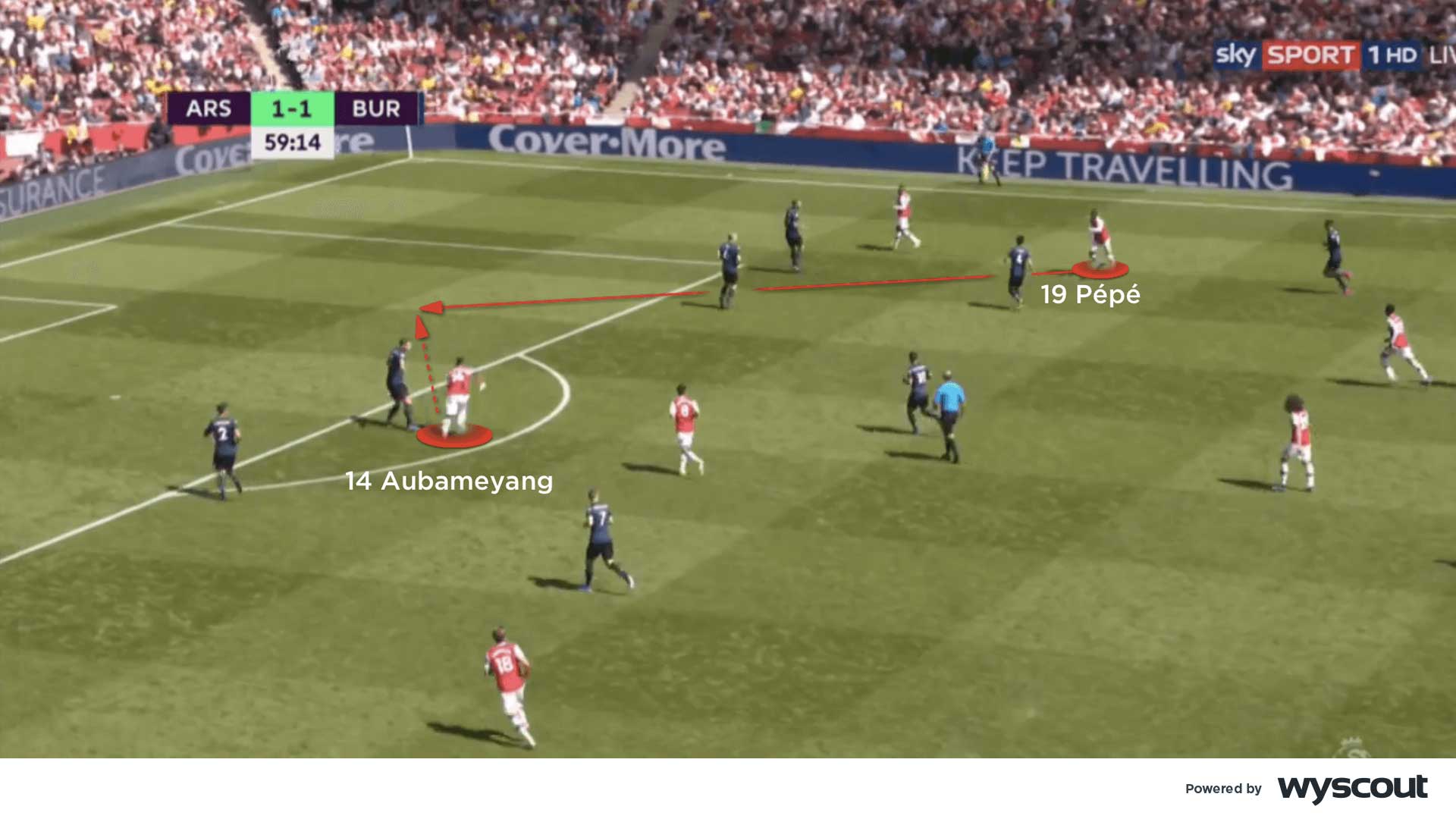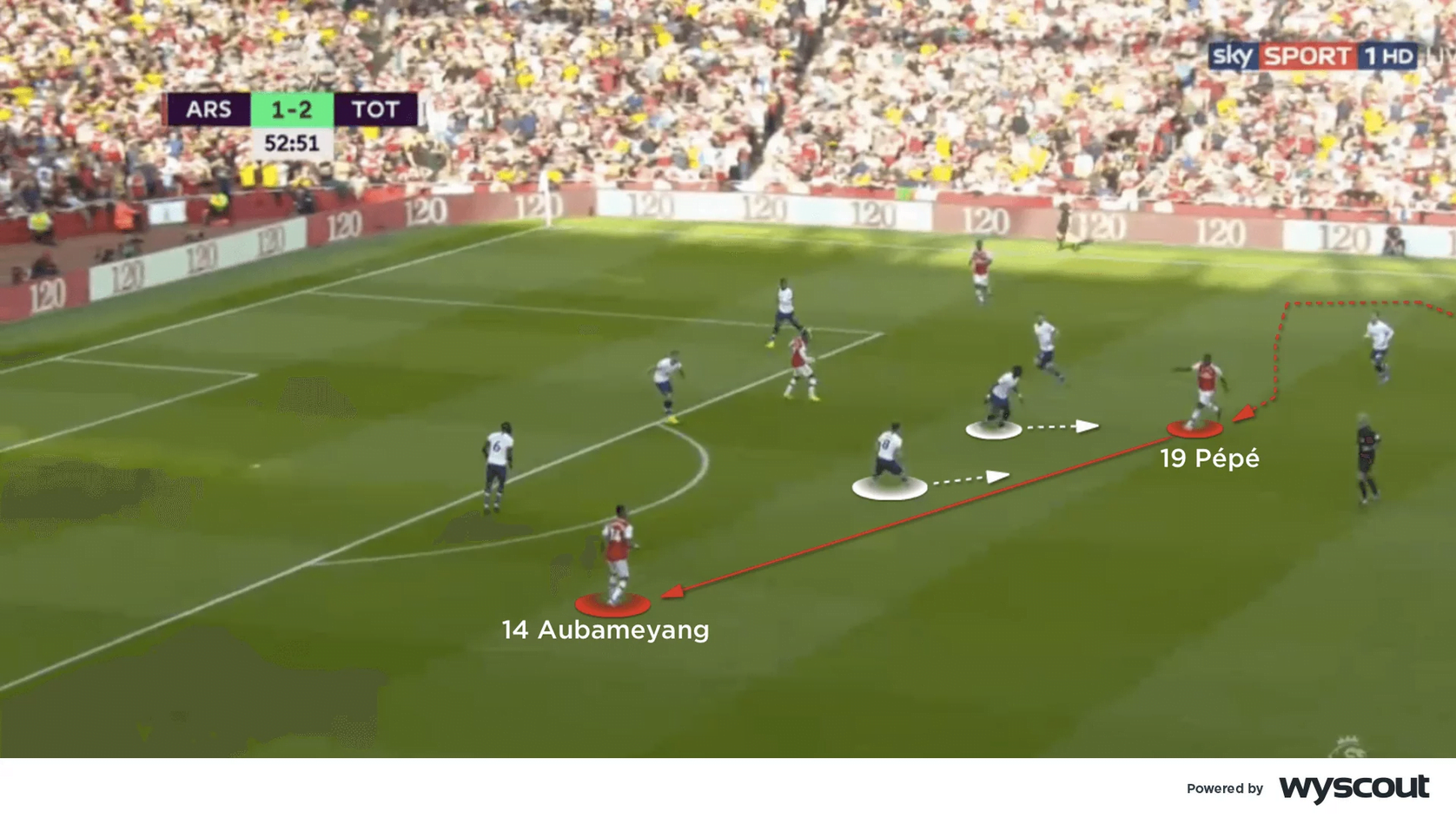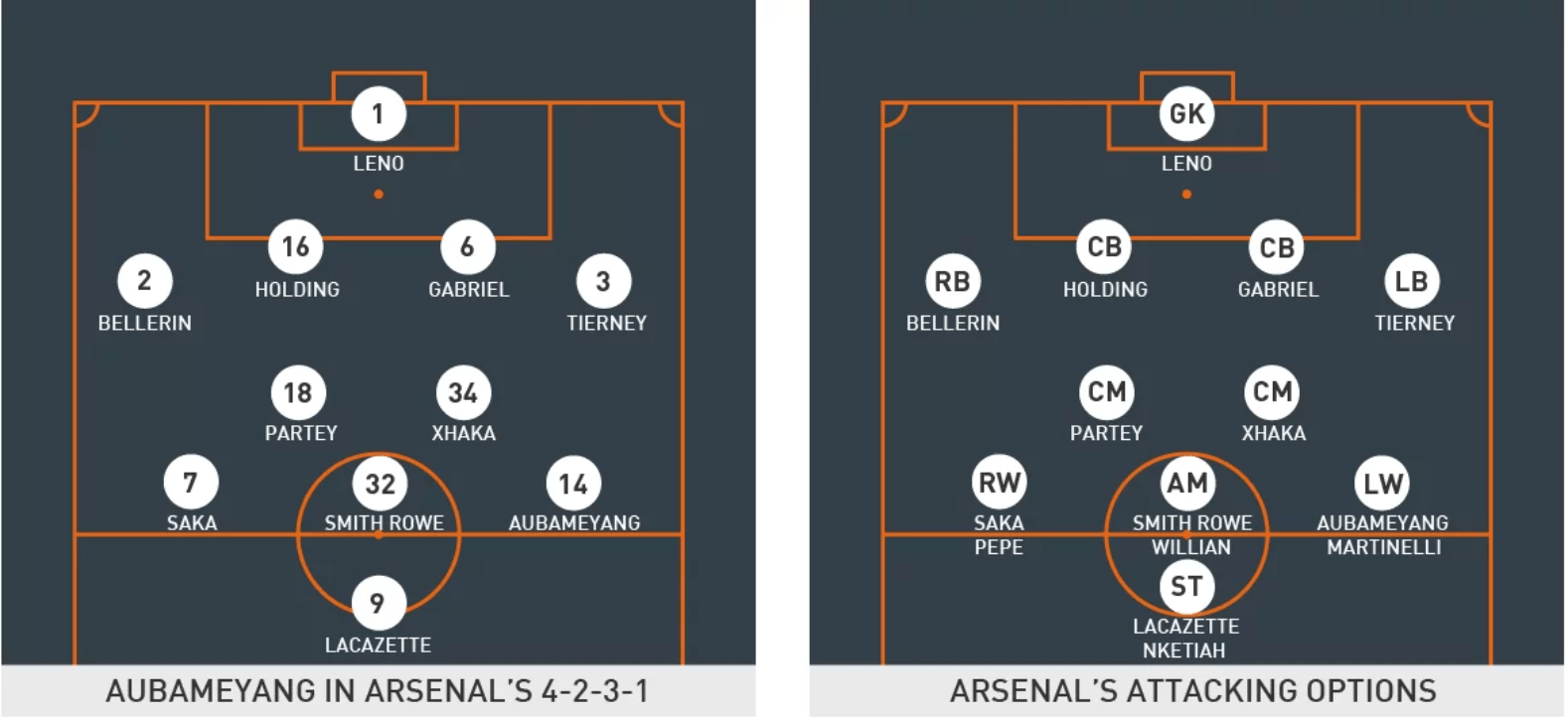Pierre-emerick aubameyang [Profile]
During Pierre-Emerick Aubameyang’s first two years at Arsenal, he played under as many permanent managers as the club had in the previous 31 years. Initially signed by Arsène Wenger and then playing throughout Unai Emery’s reign, he later adapted well to Mikel Arteta, who became his third manager at the Emirates Stadium. Despite the changes, Aubameyang has remained impressive.
In his first full season with Arsenal, he quickly adapted to the Premier League and shared the golden boot with Mo Salah and Sadio Mané after finishing as the joint-leading goalscorer with 22 goals. Despite Arsenal’s turbulent 2019/20 season, Aubameyang still managed to score 22 league goals and finished second only to Jamie Vardy, who scored 23 goals. As the club’s captain and top scorer, Aubameyang has become an integral part of Arteta’s team.
Tactical analysis
When attacking the penalty area, Pierre-Emerick Aubameyang has always relied on his clever movements to evade defenders. His acceleration, especially from a stationary position, is a significant advantage as he can quickly exploit gaps and open spaces. He has excellent awareness and timing, which enable him to make runs comparable to the best players in the world.
Aubameyang’s ability to exploit spaces high up the field has become vital for Arsenal. While Unai Emery deployed him as a central striker and on both wings, Mikel Arteta prefers to play him on the left side. From this position, Aubameyang looks to receive passes behind the opposing right-back and create one-on-one opportunities with the goalkeeper. His finishing skills are exceptional as he can shoot early, slide the ball under or chip the goalkeeper when necessary. Moreover, he is a threat from outside the penalty area with his powerful shots.

Pierre-Emerick Aubameyang is skilled at rolling possession from one foot to the other, in either direction, to create a shooting opportunity even when faced with several defenders who are set in their position. Since most goals are scored off one or two touches, this ability is particularly useful when it seems like the chance to shoot has already passed. Furthermore, he can execute this technique from any angle and from either side of the pitch, as his left foot is almost as strong as his right. Additionally, his explosive movements make it challenging for defenders to stop him from shooting. They often try to anticipate his next move and get a head start on him, but this can backfire if he goes in the opposite direction. In such situations, he is one of the best in the world.
However, when his back is facing the goal, he is less effective. His hold-up play is not convincing, which is why Arteta prefers to play him on the left. Despite his physicality, he can be easily pushed off the ball, and he prefers to play off of one touch to avoid contact with his opponent. This approach can result in misplaced passes, but it helps him evade defenders. He can also be guilty of hurrying his attempts to move forward and get closer to the goal, which can lead to losing possession.
Role at Arsenal
Regardless of whether Mikel Arteta uses a back three or four, he typically deploys three players in attack, with Pierre-Emerick Aubameyang almost always starting on the left. Unai Emery had tried to use a diamond midfield to allow Aubameyang to play alongside Alexandre Lacazette in a two, but Arteta prefers a lone striker, which is why Aubameyang has been given a wider starting position. Even when playing in a central role, Aubameyang tends to drift wide to find space, similar to how Thierry Henry used to play for Arsenal. He is comfortable holding a wide position, either to receive a pass to his feet before running at his opponent or looking to run on to a pass behind the defense.
The presence of Bukayo Saka, Willian, or Nicolas Pépé on the right side provides Arsenal with another direct threat, but Pépé often moves inside on his left foot and draws midfielders out of position in an attempt to create opportunities. Aubameyang takes advantage of the spaces created by Pépé’s movement by moving into a central position between the lines once the opposing central midfielders have been drawn towards the ball. If the opposing team continues attacking towards the right, Aubameyang prioritizes the spaces behind the defense and looks to run onto balls played across the goal.

Pierre-Emerick Aubameyang’s penetrative movements encourage swift attacks after regains in midfield and increase their potential during moments of transition. With attackers like Aubameyang, Alexandre Lacazette, Emile Smith Rowe, Nicolas Pépé, Willian, Reiss Nelson, Bukayo Saka, and Eddie Nketiah, Arsenal can break at speed in front of wing-backs or full-backs who support attacks and add numbers in the final third.
Despite his eagerness to attack, Aubameyang deserves credit for improving his defensive awareness. As Arsenal’s captain, he has taken a mature approach to playing on the left and tracks back effectively to ensure that his team quickly adopts the out-of-possession shape demanded by Arteta. This is one of the reasons why Arsenal are better defensively under Arteta than they were under Emery. Although Aubameyang has always been a lethal goal-scorer, he has become an even more complete player since becoming a dressing room leader and senior member of Arsenal’s squad. This evolution is indicative of his dedication to the team’s success.




Published by